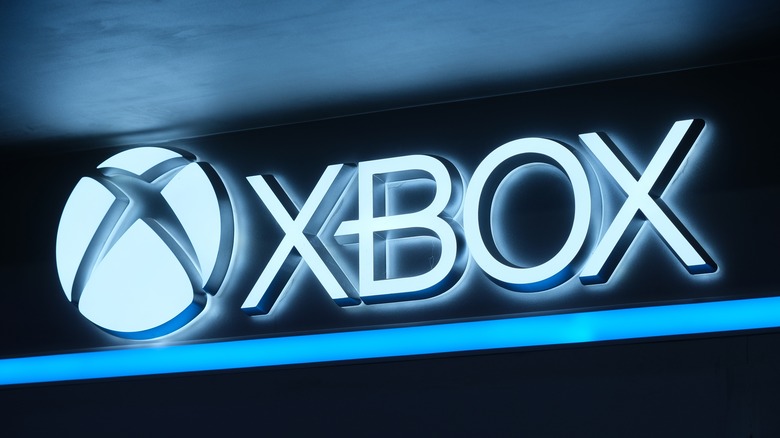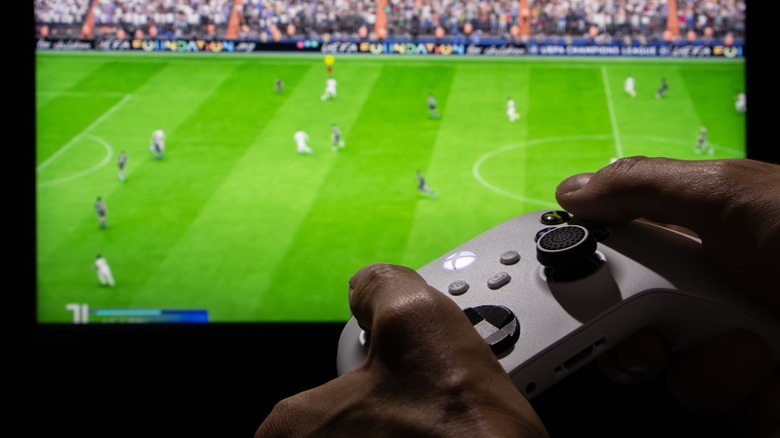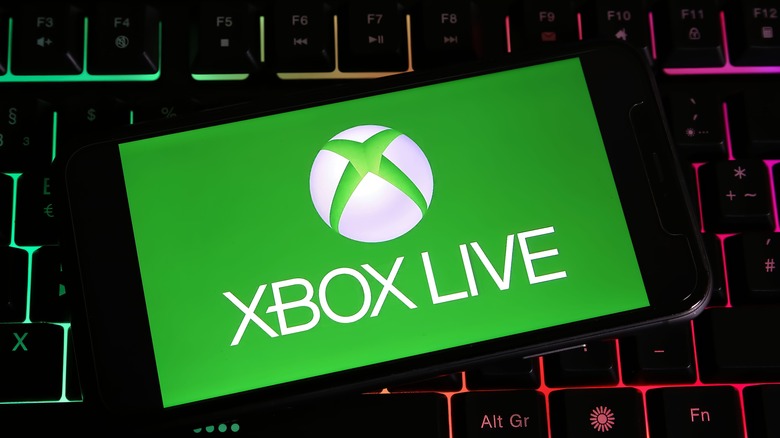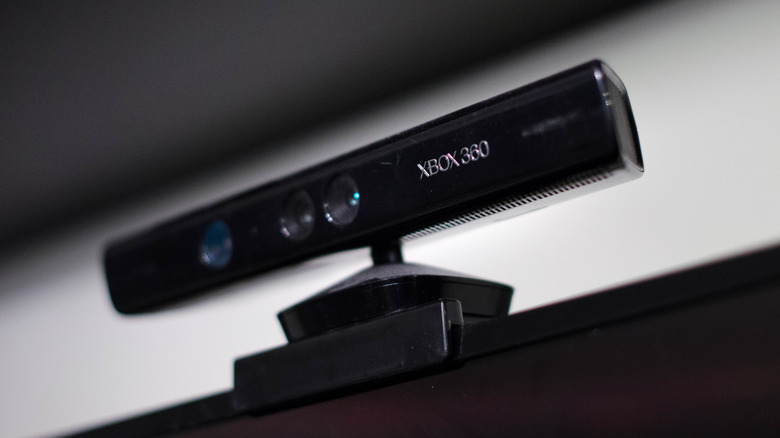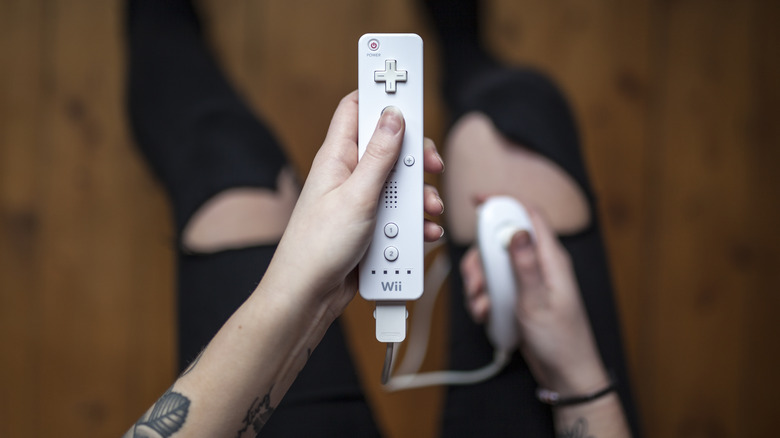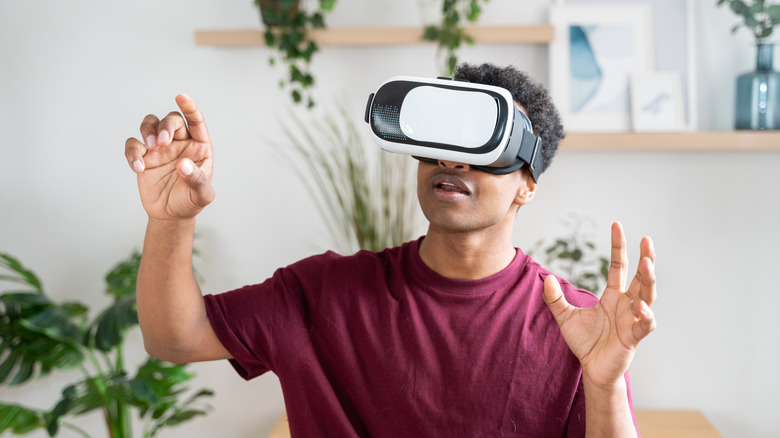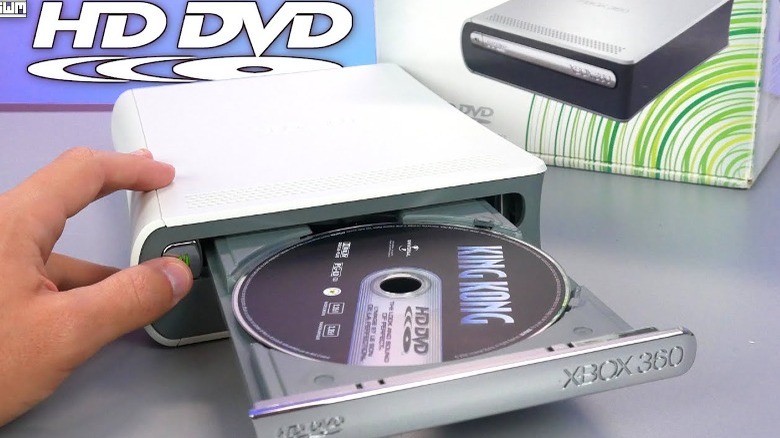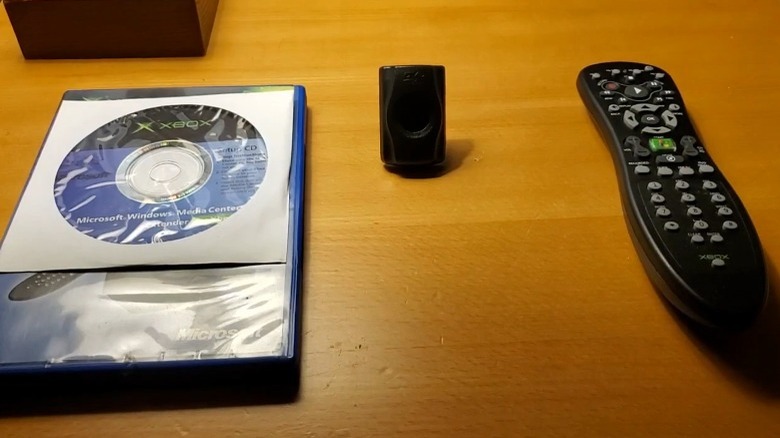7 Cancelled Xbox Products You've Probably Never Heard Of
It isn't unusual for gaming consoles to have a vast array of add-ons and accessories released during their lifetimes. While they are almost always primarily meant to play games with a standard controller, manufacturers, and third parties often release hardware that can expand the capabilities of a system or add new features. Some of these can be useful and incredibly popular, although it can also mean that some truly weird peripherals are released for systems.
Despite not having as long a history in gaming as Nintendo or Sony, Microsoft has established itself as a major force. Over the last two decades, the company has released four Xbox consoles to various degrees of success. During that time, they also worked on some additional hardware. A lot of those extra releases either never saw the light of day or were shelved after finding limited success in the wild.
Here are some of the Xbox products that Microsoft worked on that were ultimately canceled.
Keystone streaming console
The revelation that Microsoft was working on an Xbox streaming device — codenamed Keystone — came during a stream that showed the console sitting on a shelf behind Phil Spencer. A recent patent application shed some light on Keystone. The system would have included ports for HDMI, Ethernet, USB-A, and a power source, as well as the ability to work with a standard Xbox controller and access the web wirelessly to stream games.
The Microsoft team ultimately could not get the Keystone to the price point the company wanted. Without being able to lower the price to a level of around $100, it was felt that it would not be as desirable to consumers who could get an Xbox Series S for $299. Speaking to The Verge's Decoder podcast, Microsoft Gaming CEO Phil Spencer explained, "I think all of us knew that we were a little out of position on price [due to] some of the silicon choices that we were making at the time we were designing."
Spencer also admitted that he was part of the problem as he wanted to ensure that the streaming device came with a controller so players got the best experience. The Xbox boss later revealed that he believed the sort of streaming device Microsoft was working on is now years away as the technology is simply not good or cheap enough right now to make it viable. However, Spencer did say that it worked well and that a team had been working on Keystone for nine months before it was shelved.
Handheld portable Xbox device
For years, whenever a successful console was launched, talk followed of a handheld version of the system. For decades, Nintendo has dominated the market for portable systems that can be played on the go without the need to hook up to a television. However, other manufacturers have tried to get a slice of the pie over the years to mixed success, leading to some of the most bizarre gaming handhelds of all time. The failure of the PlayStation Vita is a good example of that.
According to an interview with former Chief Xbox Officer Robbie Bach, who spoke to IGN in 2016, Microsoft had plans to release a handheld Xbox console after it launched the original Xbox. Jokingly referred to as the Xboy, the console went through early development, and the team produced drawings of what the system might look like before its cancellation. Bach acknowledged that Microsoft felt it should "play in that part of the ecosystem" but ultimately decided to concentrate on the Xbox 360 as the company "just did not have the bandwidth" to work on two big hardware projects at the same time.
The decision may well have proved financially sound given the rise of smartphone technology and casual gaming, although Bach explained these were not reasons Microsoft considered when shelving the idea. A handheld Xbox console is not something that the company has entirely given up on, with Phil Spencer revealing he would like to see such a device in the future.
Kinect camera system
The Nintendo Wii's non-traditional controller's success led to the likes of Microsoft and Sony experimenting with new ways of allowing players to interact with games. The solution that the Xbox team developed was initially unveiled to the public at E3 in 2009 as Project Natal. It was essentially a camera system that could recognize movements and gestures, as well as human voices, and translate them into game inputs. It went on sale a little over a year later and initially proved something of a success, at least with more casual gamers, thanks to its line-up of family-friendly titles.
The idea behind what would officially become the Kinect began at an Israeli company called PrimeSense. After seeing a demonstration of the startup's motion-tracking camera, Microsoft hardware developer Alex Kipman began collaborating with PrimeSense with the intention to create a device that would allow players to interact with games without holding any physical devices. With the help of other developers at Microsoft, the Xbox team managed to improve the camera technology.
Largely due to the fact that it failed to be adopted by the wider Xbox user base and was home to sports and music games, the Kinect ended up being a complete failure. Things only got worse when Microsoft attempted to force the Kinect to be an essential part of the Xbox One system until backlash prompted the company to change tact. After a couple of years, Microsoft dropped the Kinect entirely having lessened support and transitioning Kinect to other uses.
Motion controller for Xbox 360
The sheer popularity of the Nintendo Wii meant that the idea of motion controls and other forms of interactive gameplay that got people moving began to be more widely considered. Both Microsoft and Sony began investigating ways to include new forms of input in their latest consoles to attract the wider audience that the Nintendo Wii brought in, especially the older and younger players who traditionally wouldn't be gamers.
In a Polygon article, Microsoft senior product planner Richard Velázquez explained how the company questioned whether motion controls would become standard and explored possible new controller options. One of these was similar to the Wii Remote, but other ideas were also discussed that would have been more novel. This included a kind of nerf ball that could be thrown through the air and passed between players.
Velázquez described the controller concept as a "indestructible controller that you can throw or toss or bounce around" that would be "harmless if thrown around, wouldn't break if dropped or thrown, and could be interchanged and shared with other players." This was not the only design, as the Xbox team also worked on a set of motion controllers that Velázquez said players would use "one in one hand, one in the other, just like the PlayStation Move." Ultimately, Microsoft decided to go forward with the motion capture camera technology it had been working on, leading to the other motion controllers being canceled.
VR headset
Although virtual reality still isn't part of mainstream gaming, it is growing in popularity. The increase in reliable and effective virtual reality technology and a fall in price for devices has led to several VR headsets worth buying right now. Big names like Meta, Valve, and HTC have released VR headsets, while Sony has launched several iterations of PlayStation VR. Perhaps it shouldn't come as a huge surprise that Microsoft has dabbled in the field to mixed success. In 2023, Microsoft ditched support for Windows Mixed Reality on Windows 10 but went ahead with the augmented reality system known as HoloLens 2.
A report from CNET claims that Microsoft collaborated with several developers about the possibility of making VR-based games for Xbox consoles despite the fact the company claimed it had no plans to enter the market in 2018. Two sources confirmed to the outlet that a VR headset that would be compatible with Xbox systems was in the works.
While the exact specifications of the proposed device have not been revealed, reports suggest it would have had strong graphical fidelity and an impressive display. However, it would not have been as advanced as the high-end offerings from Meta and HTC. Microsoft dropped plans for the VR headset shortly before an announcement as the team wanted to wait until it could create a more versatile wireless device as new tech became available.
The HD DVD Player add-on
The HD DVD was one of two potential successors to the DVD. Championed by Toshiba, it went up against Sony's Blu-ray disc and was involved in a short-lived format war. This is not uncommon in the tech industry and is likely something most people will have some knowledge of. After all, VHS and Betamax were involved in a similar dispute during the 1970s and 1980s. HD DVD lost the format war after just two years, leaving Blu-ray to become the standard high-definition physical format after the PlayStation 3 launched with the ability to play Blu-ray discs.
The PS3 was not the only console involved in the format war, though, as Microsoft also joined in support of HD DVD. While the Xbox 360 did not natively support HD DVD playback, Microsoft released an external disc player that could be connected to an Xbox 360 to play HD DVD movies. Launched in 2006, it had an initial price of $199 and largely matched the aesthetics of the Xbox 360 platform. Selling just over 300,000 units, it didn't make much of an impression with the Xbox 360 user base.
Microsoft discontinued the HD DVD add-on just two years after it was first introduced, following Toshiba's announcement that it was ending production of all HD DVD players. This left the Xbox 360 without any way to play high-definition movies after the HD DVD format was dropped, as no Blu-ray accessory was created despite speculation that one might be developed.
Windows Media Center Extender for Xbox
Although many people are likely familiar with Windows Media Center, Microsoft's built-in software for playing media on PCs, you may not know that the company also produced Media Player PCs. These devices were Microsoft's answer to set-top boxes that acted as an all-in-one solution for entertainment. They could play movies, music, and even watch or record live television. An important feature of Media Center PCs was their ability to be used on multiple television screens and other devices through a Media Center Extender. This essentially gave users remote control of the Media Center and allowed access to its content.
During the latter stages of the lifecycle of the original Xbox, Microsoft launched a version of the Media Center Extender that worked with the console. Setting up the device required a wireless internet connection and the included setup disc, which allowed users to enter a code on their Media Center PC to pair it with the Xbox. It also came equipped with an IR remote control so you could manage playback of media such as music and video without having to use the standard game controller.
The only major drawback with this particular product was that it was unable to play HD content and came out shortly before the launch of the Xbox 360. Both factors limited its appeal, and the device didn't last long, although a version was later released for the Xbox 360.
